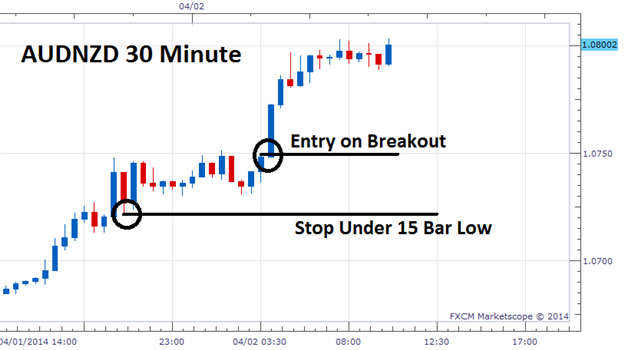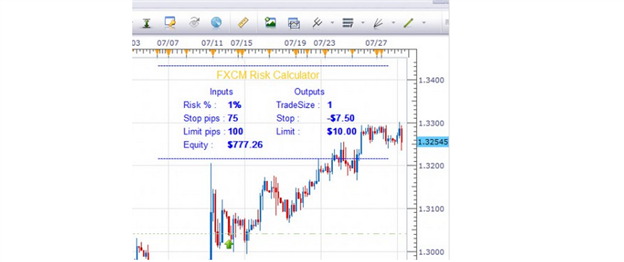Talking Points:
- Determining trade size is critical to risk management
- Larger lot sizes increase profit and losses per pip
- Use the Risk Management App to simplify calculations
Many Forex scalpers have plans for stop placement, but often forget about position size! This can be devastating to a traders account in the event that too much leverage is used when an inappropriate lot size is selected. The good news is this issue can be avoided with a few easy steps and calculations! Today we will review how to select the correct lot size for your trading plan.
Determine Stop Placement
The first step in determining lot size is to plan your stop placement. While this may sound counter intuitive, this step must be taken before we proceed. There are virtually limitless ways to determine where to place your stops which include finding market swings, using volatility indicators, or selecting an arbitrary value. Regardless of how you decide to place your stop, once set, remember the value of pips your stop is away from your entry. Keep this value handy as we move on to the next step!
Learn Forex: AUDNZD with a sample 15 Bar Stop

Determine Risk %
The next task is to determine how much you wish to risk as a percentage of your account. Normally traders are recommended to employ the 1% rule. This means that traders should never risk more than 1% of their account balance on any one trading idea. That means using the math above, if you are trading a $10,000 account you should never risk more than $100 on any one positions. Keep this total in mind as well, as we work to our final goal of determining the appropriate position size.

Evaluate Pip Cost and Lot Size
Next we will need to determine pip cost. Pip cost by definition is how much you stand to earn or lose per pip, as a trade moves in and out of your favor. This number becomes critical when we begin to evaluate trade size and risk on an individual position, because the larger the position we trade the more we stand to lose per pip. So how big should our trade size be?
The key is to take your total risk (1% of Balance) and divide this value by the number of pips you are risking. The result is the value you should be risking per pip to meet this requirement. Traders can then adjust their lot size to fit the pip cost needed. The example above shows a trade with a sample $10,000 balance. If we wanted to risk $100 (1% of balance) on a 10 pip stop, we would need to use a 100k trade size. If we lose $10 a pip for a 10 pip stop loss this puts our total loss at $100 or 1% of our $10,000 balance.

Risk Management App
Now that you know how to calculate your proper trade size, let’s simplify the process. FXCM has an application available for the Marketscope 2.0 charting software designed to help determine how much risk is being assumed on any one particular trade. Once added to your chart, the FXCM Risk Calculator, as depicted above, has the ability to help a trader calculate risk based off of trade size and stop levels.
We walk through the application, as well as how to manage risk in several videos embedded into the brainshark medium. After clicking on the link below, you’ll be asked to input information into the ‘Guestbook,’ after which you’ll be met with a series of risk management videos along with download instructions for the application.
Risk Management AppDownloadand Review via Brainshark
---Written by Walker England, Trading Instructor
To contact Walker, email instructor@dailyfx.com. Follow me on Twitter at @WEnglandFX.
To be added to Walker’s e-mail distribution list, CLICK HERE and enter in your email information




